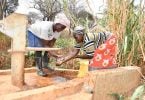The Ministry of Transport of Vietnam aims to finish the pre-feasibility study for the North-South high-speed railway project soon and commence construction on two crucial sections before 2030.
The Ministry of Transport leaders announced plans to present the pre-feasibility study report for the North-South high-speed railway to the National Assembly for approval.
The railway, as outlined in the National Master Plan for 2021-2030 and the Railway Network Plan, will span approximately 1,545 km with a double-track scale and a gauge of 1,435 mm, aiming to fulfill its vision by 2050.
In February, the Politburo issued a directive outlining Vietnam’s railway development direction. It mandated relevant agencies to study global practices, analyze them, and select a modern investment plan for construction in the country’s railway development.
In line with the Politburo’s directive, Prime Minister Pham Minh Chinh established a steering committee to execute the North-South high-speed railway project.
The plan aims for a forward-looking vision, leveraging Vietnam’s strengths, aligning with global development trends, and ensuring suitability for national and international advancements.
The Ministry of Transport gathered input from various ministries and organizations to finalize a comprehensive plan for the project. During a recent meeting, Deputy Prime Minister Tran Hong Ha emphasized the project’s significant role in advancing the nation’s socio-economic growth, industrialization, and modernization. Stressing its importance, he highlighted the necessity for broad interdisciplinary agreement, contribution, and involvement in the project.
The Deputy Prime Minister instructed the Ministry of Transport to develop a plan aligned with socio-economic needs and international best practices. This plan should prioritize feasibility, safety, efficiency, and alignment with global development trends.
He urged the Ministry of Transport to lead collaborations with other ministries and businesses to establish suitable mechanisms. These include capital acquisition mechanisms, land revenues from regions, training and employing railway professionals, fostering railway industry growth, attracting public-private partnerships for investment, and facilitating technology transfer through foreign direct investment.
Given the project’s extensive scale, technical complexity, and extended timeline of over ten years, Deputy Prime Minister Ha emphasized that the initial investment estimation is provisional. He stressed the need for updated, accurate data in subsequent phases to prevent misunderstandings if the total project investment rises during implementation.







